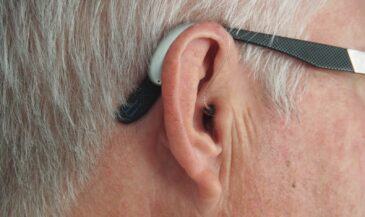By Dr. Christopher Kent
The neurological dysfunction associated with a vertebral subluxation may take many forms. One such process is dysafferentation. Aberrant afferent input to the CNS may result in qualitatively and/or quantitatively inappropriate responses to changes in the internal or external environment. [1] In the contemporary jargon of the computer industry, there is “garbage in garbage out.” Dr. Fred Barge, in his book, “One Cause, One Cure” stated that the cause of disease is “The body’s inability to comprehend itself and/or its environment.” [2] Such “comprehension” is dependent upon interferencefree afferent input.
Dye [3] quoted remarks attributed to B.J. Palmer in August, 1935, which express this concept, noting the result of an adjustment: “[T]he restoration of the normal transmission of mental impulse supply from its point of origin within the brain to its point of expression in thee diseased part of the body, or viceversa, that the Innate Intelligence within the brain may receive correct, accurate, exact messages as to the external conditions existing at the periphery so that it may direct either the necessary reparative forces or the necessary cooperative forces from that the tissues may be repaired or that the organ or structure may be properly directed that it may perform the normal functioning desired and indicated by the incoming message from me part without.”
The authors of the remarkable book “Segmental Neuropathy,” published by Canadian Memorial Chiropractic College, proposed the concept of a “neural image,” dependent upon the integrity of neural receptors and afferent pathways. This “neural image” is a representation of the organism’s perception of the external and internal environment. If afferent input is compromised, efferent response may be qualitatively and quantitatively compromised. [4]
The clinical implications of aberrant or suboptimal afferent input have implications beyond shortterm homeostatic regulation. Today, we know the stakes are much higher dysafferentation may result in anatomical and functional changes in the brain itself. Merzenich [5] noted, “The brain was constructed to change.” This challenge to the conventional worldview that the mature adult brain is stable and unchanging the only exception being the death of brain cells has profound implications for the chiropractor.
Gage [6] stated, “Researchers first demonstrated that the central nervous systems of mammals contain some innate regenerative properties in the 1960s and 1970s, when several groups showed that axons, or main branches, of neurons in the adult brain and spinal cord can regrow to some extent after injury.”
The ability of the brain to change both anatomically and functionally is known as neuroplasticity. Clifford reviewed three types:
1. Experienceindependent plasticity refers to changes which are not the result of environmental changes or influence.
2. Experienceexpectant plasticity occurs when the brain uses input from the external environment to effect normal developmental changes in its structure.
3. Experiencedependent plasticity is when a modification to the internal or external environment produces change in a feature of the brain. [7]
Holloway [5] explained how the brain reconfigures itself, and the implications of doing so:
“Change the inputbe it a behavior, a mental exercise…or a physical skilland the brain changes accordingly. Magnetic resonance imaging machines reveal the new map: different regions light up…
“[T]he brain can be extensively remodeled throughout the course of one’s life, without drugs, without surgery. Regions of the brain can be taught to do different tasks if need be…This sort of thing will be a part of normal future life…healing plasticity can be driven by behavior.”
References
1. Kent C: “Models of vertebral subluxation: a review.” Journal of Vertebral Subluxation Research. Vol. 1, No. 1 (August 1996)
2. Barge FH: “One Cause, One Cure.” LaCrosse, WI. 1990.
3. Dye AA: “The Evolution of Chiropractic.” Published by A.A. Dye, DC, Philadelphia, 1939, p. 266.
4. “Segmental Neuropathy.” Canadian Memorial Chiropractic College. Toronto, Ontario. No date. Presumed to be written in the 1960s primarily by H.M. Himes and A. Peterson.
5. Holloway M: “The mutable brain.” Scientific American 2002;289(3):79.
6. Gage FH: “Brain, repair yourself.” Scientific American 2002;289(3):47.
7. http://hcs.harvard.edu/~husn/BRAIN/vol6/p1620Neuronalplasticity.pdf






























































































































































